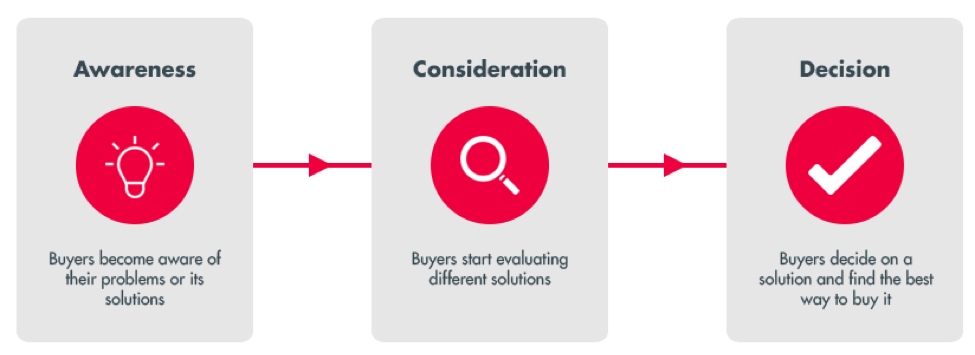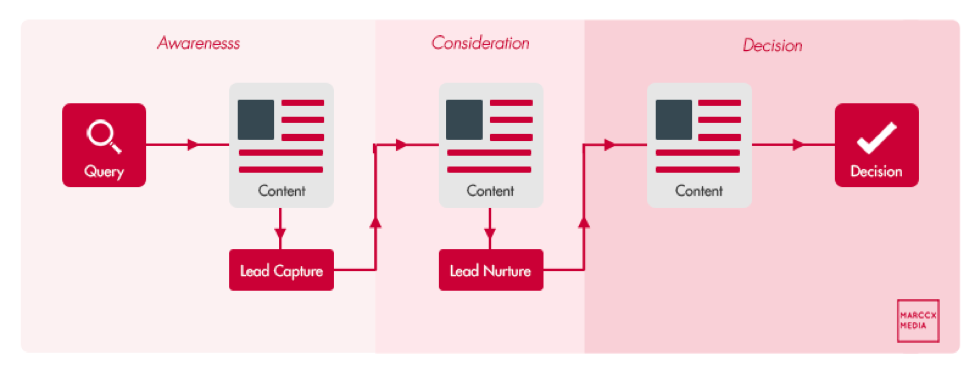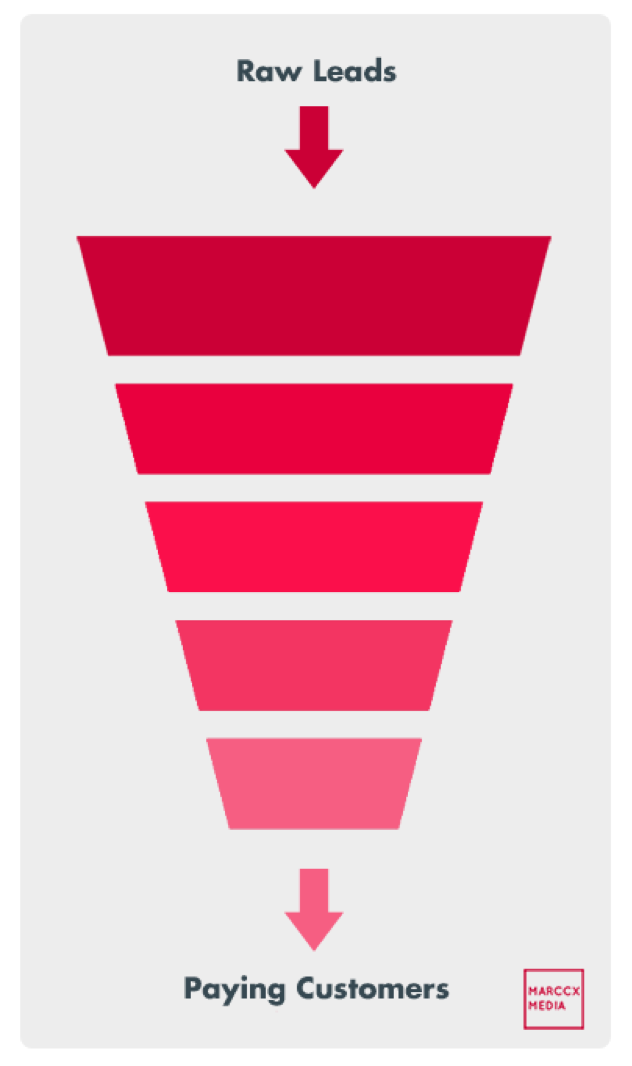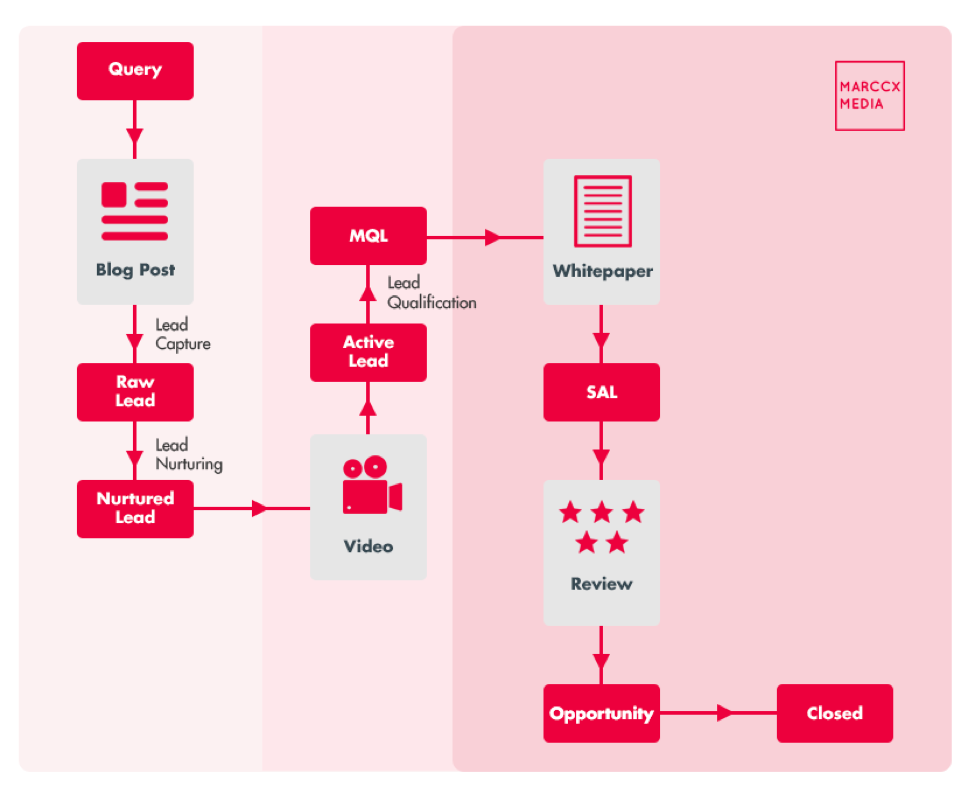Setting Up Your Sales Funnel – Understanding the Buyer’s Journey
The Sales Funnel For More Customers
This blog post is part of a 2-part series, The Buyer’s Journey. Click here to check out part 2, Content Marketing – How To Drive Conversions with Content.
The buyer’s journey is one of the most powerful frameworks for understanding your customers and how they buy your products. It breaks from traditional notions of “push” marketing and helps businesses “pull” customers in by guiding them through the purchase process.
But what does the buyer’s journey actually look like? How does it relate to content marketing? How can you use it to move prospects through the sales funnel?
In this two-part post, we’ll answer all these questions and more. By the end of the guide, you’ll have a complete understanding of the buyer’s journey and how you can use it to turn prospects into loyal customers.
Understanding the Buyer’s Journey
The buyer’s journey essentially describes a framework for understanding how a customer approaches a purchase decision. It’s not a new concept – it was first explained in 1968 – but the changing nature of commerce has made it much more important for a modern business.
Every time a customer buys something, he goes through a series of steps before deciding what to buy. These steps involve understanding the problem, researching its solution, and finding the best (and cheapest) way to purchase a desired solution. In a way, it resembles a journey, and hence the name – the buyer’s journey.
Broadly speaking, the buyer’s journey can be divided into three separate stages:
[sociallocker id=4153]- Awareness: In this stage, the buyer first becomes aware of the a problem and starts the process of understanding it.
- Consideration: In the consideration stage, the buyer starts evaluating different solutions and gains an in-depth understanding of the problem.
- Decision: In the final decision stage, the buyer decides what to buy from a shortlist of solutions.
Depending on who you ask, the buyer’s journey also has a fourth stage, called Advocate where buyers turn from customers into evangelists.
The Buyer’s Journey is Not Linear
Based on the above, you might be tempted to believe that the buyer’s journey is a linear process, i.e. buyers move from awareness to consideration stage and so on in a straight path.
In truth, the buyer’s journey is highly un-regimented. In today’s internet age, a buyer is not beholden to salespeople and limited knowledge sources to research a product. A customer can very well jump from Google to a private forum to social media to understand what to buy. In between, he can move from awareness to decision stage, and then back again depending on what he finds.
To drive conversions in a non-linear buyer’s journey, it is important to invest in content, as we will see below.
Why is the Buyer’s Journey Important?
While the buyer’s journey has always been an important framework for understanding consumer behavior, it has now grown into a crucial cog in any marketing machine. The reason for this transformation is the rapid advent of the internet and the way it has changed buying behavior.
Before the internet, if a consumer wanted to solve a problem, he had few ways to understand it. He might read a trade journal or ask friends in the industry for advice, but there was no way to get on-demand information on the problem and its solutions. Eventually, he would turn to a salesperson who would offer him selective information in the hope of landing a sale.
In contrast, the customer today has the world’s knowledge base right at his fingertips. He can research a problem in-depth on Google, read countless blogs, and ask questions on social media to better understand his needs. He does not need to rely on a salesperson to provide him with information. In fact, according to one estimate, 67% of the buyer’s journey is already done by the time a prospect contacts a salesperson.
In a world where salespeople are no longer the gatekeepers of information, it is crucial for businesses to understand how their buyers approach the purchase process. Once you have the entire process mapped out, you can offer relevant solutions at the right time to influence the purchase decision.
In this way, the buyer’s journey helps businesses model their marketing to fit the needs of their customers. Instead of “push” marketing, businesses can use “pull” marketing to influence, attract and retain customers.
The Buyer’s Journey and Content Marketing
Content marketing is the process of attracting customers by creating and sharing high-quality content. It is the foundation of modern SEO and any “pull” based marketing model.
As it turns out, content marketing is directly related to the buyer’s journey. If you know what path your customers take to buy a product, you can create content that helps them make a purchase decision in your favor. This content can be tailored to each stage in the buyer’s journey, so that instead of being a business that merely sells its own products, you can transform yourself into a business that helps customers solve problems.
This transformation from a seller to an authoritative source of information can do wonders for your brand. It can also be a direct source of quality leads and sales.
For example, a business that sells electronics can create an in-depth guide to buying laptops. When customers searching for help in buying laptops chance upon this guide, the business can pitch them its own products or capture leads to follow-up later.
To understand how the buyer’s journey relates to content marketing, we have to first understand the content marketing process in-depth.
The Content Marketing Process
Combining content marketing with the buyer’s journey is a three-step process:
- Mapping the buyer’s journey and aligning it with your sales funnel.
- Developing content for each stage of the journey.
- Capturing leads and pushing them further down the sales funnel.
Essentially, it involves identifying what buyers look for at different stages in the buyer’s journey, creating content that answers their questions, and then leveraging the content to move buyer’s further down the sales funnel.
Graphically, it can be represented as follows:
Below, we’ll look at all three steps in the process in more detail.
Setting up the Sales Funnel
The first step in the content marketing process is to identify the sales funnel and align it with the buyer’s journey.
As you might be aware, the sales funnel is a concept for mapping how customers move from ‘unqualified prospects’ to ‘paying customer’. Since the number of prospects is always going to be substantially larger than the number of customers, the end result is a ‘funnel’ like structure:
Here, a large number of prospects enter the top of the funnel. Through lead qualification and nurturing, unmotivated prospects are removed in each stage of the funnel. By the very end, only highly motivated, qualified leads remain who can easily be converted into customers.
Broadly speaking, the sales funnel has the following stages:
- Raw leads: These are incoming leads you know little about, except for broad details (such as phone number or email address). It is marketing’s job to learn more about these leads and remove all unqualified ones.
- Nurtured leads: Leads that remain after removal of all unqualified raw leads are classified as nurtured leads. You’ll likely have more information about them, including their names, position, and website.
- Active leads: Nurtured leads that have shown an intent to purchase are classified as active leads. These are actively engaged in the purchase process and have a strong likelihood of turning into customers.
- Marketing Qualified Leads (MQLs): These are leads that meet the qualification criteria laid down by the marketing department (such as budget, timeframe to purchase, etc.).
- Sales Accepted Leads (SALs): MQLs that have been accepted by sales are categorized as SALs. Once leads enter the SAL stage, the responsibilities of the marketing department stop and the sales department picks up.
- Opportunities: SALs who have shown a strong desire to buy are classified as opportunities. An opportunity is just one step away from turning into a customer.
- Closed: A lead that has turned into a paying customer is said to have closed.
If you take a closer look at the sales funnel, you’ll realize that it resembles the buyer’s journey:
- Buyers in the Awareness Stage know little about the problem or its solution. Hence, they represent raw leads who are very unsure of whether they’ll buy anything.
- Buyers in the Consideration Stage understand the problem and are evaluating solutions. They represent qualified leads who have a strong chance of turning into customers.
- Buyers in the Decision Stage are choosing between a handful of options. These represent opportunities who can be turned into closed deals with the right sales push.
Combined with the buyer’s journey, the sales funnel can be represented this way:
Thus, the sales funnel is closely aligned with The Buyer’s Journey. Once you map the two, it is possible to create content that helps customers in each stage of the journey and pushes them further down the sales funnel.
This blog post is part of a 2-part series, The Buyer’s Journey. Click here to check out part 2, Content Marketing – How To Drive Conversions with Content
[/sociallocker]







